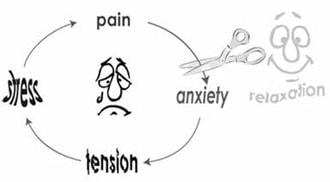|
Why it is important to monitor your baby's movements? What to look out for and most importantly what to do if they slow down or stop. Did you know a decrease in baby's movements can be a key warning sign that a baby is in distress and 50% of mothers who had a stillbirth noticed slowing down of baby's movements beforehand? So read on and find out how to monitor your baby's movements and what to do when their pattern of movements/kicks changes. From around 16 - 24 weeks you begin to feel your baby as they move around in the womb and have a good understanding for how much they "kick", when and where. Your baby's movements are a reassuring sign that they are well if you notice a change then trust your instincts don't delay and get yourself checked out by your midwife or gynaecologist. What’s normal? Most people usually start to feel their baby move between 16 and 24 weeks of pregnancy. You may feel your baby move as early as 16 weeks of pregnancy, especially if you’ve been pregnant before. If this is your first pregnancy, you may not notice your baby’s movements until you are more than 20 weeks pregnant. What does baby movement feel like? A baby’s movements can be anything from a kick, flutter, punch, swish or roll. The type of movement may change as your pregnancy progresses. Baby movement is often referred to as ‘baby kicks’ How often should my baby move? All babies are different! There is no set number of normal movements. From 16 – 24 weeks on you should feel your baby move more and more until 32 weeks. After 32 weeks, movements should stay roughly the same until you give birth. It’s important to get to know your baby’s regular pattern of movement. Why are my baby’s movements important? Your baby’s movements are a sign of their well-being. A reduction or change in your baby’s movements can sometimes be a warning sign that they’re unwell. It’s important to know that it’s NOT true that babies move less towards the end of pregnancy. You should continue to feel your baby move right up to the time you go into labour and whilst you are in labour too. Why would my baby’s movement reduce? When the baby is being deprived of oxygen they will slow their movements to conserve oxygen. Cord compression, a failing placenta, or a high intake of smoke may all lead to reduced movements and could be potentially fatal. What should I do if I notice reduced movement? If you think your baby’s movements have slowed down or stopped, contact your midwife, gynaecolgist or maternity unit immediately. Midwives and doctors are there to help you 24 hours a day, 7 days a week. Don’t put off calling until the next day or wait until your next scheduled appointment. Don’t worry about picking up the phone, it’s important for your doctors and midwives to know if your baby’s movements have slowed down or stopped. What if my baby’s movements are reduced again? You should contact your maternity unit again, however many times it happens. Even if everything was normal last time, don’t hesitate to contact your midwife or maternity unit for advice. You’re always doing the right thing. don’t ignore your instincts, don’t ever put off getting movements checked and make sure you’re aware of any changes in movements as it could quite literally save your baby’s life Why are my baby’s movements important? Your baby's movements are a sign of their wellbeing. A reduction or change in your baby’s movements can sometimes be a warning sign that they're unwell. It's important to know that:
If my baby's movements change does it mean my baby is definitely unwell? Not at all. Checks by medical professionals usually find that everything is OK. Most women who report one or less episodes of reduced movement go on to have a healthy baby and straightforward pregnancy. However, it's important to be checked to make sure the change isn't because your baby is one of the few that are unwell. Reporting concerns about your baby's movements could save their life. Should I prompt my baby to move? As it can cause a delay in getting medical advice, trying to make your baby move isn't recommended. If your baby's movements are concerning you, always call your maternity unit/midwife or gynaecologist. Should I use a phone app or home doppler to check the baby's heartbeat? Please don't use any device to check your baby's heartbeat, especially if you're concerned about their wellbeing. Even if you think you're listening to their heartbeat, it's possible you're actually listening to your own. The presence of a heartbeat alone does not mean your baby is well too- you both need to be checked by a healthcare professional if you're worried. Kicks Count aims to reduce the UK's high stillbirth and neonatal death rate by raising awareness of baby movements. You can find more out about Kicks Count here Adapted from the Kicks Count website (Jan 2023)
0 Comments
Following from my blog post FRONT AND CENTRE IS WHERE YOU NEED TO BE -WRITING YOUR BIRTH PROPOSAL read on the find out more about how to write your birth proposal. Midway through your pregnancy it is an idea to discuss your birth plan with your midwife or gynaecologist. It is a way of registering your preferences for the process of your labour so that your wishes can be carried out whilst you concentrate on relaxing, breathing and focusing on the birth of your baby. The ethos of hypnobirthing is to encourage natural childbirth and empower you to be in control of this process. Here are a few areas for you to discuss with your midwife and add to your birth plan if you wish. In a hypnobirthing course these are covered in more detail but please feel free to drop me an email or call if you want to discuss any of these areas. Your Environment A quiet and calm environment where you feel safe and confident will help keep you relaxed and let your labour develop quickly and smoothly. It is easier to create this environment in your own home but points to consider include:
Natural Birth If you plan on taking a course and practising for a Hypnobirthing Birth it is a good idea to let your caregivers know this so they can be fully supportive. Whilst Hypnobirthing is becoming more widespread there are still a number of health professionals who have not had any experience of the process. Simply put, practising hypnobirthing empowers you to have a calm and gentle, natural and drug free birth, and uses self hypnosis, breathing, and deep relaxation and visualisation techniques. It is best if you request patience and understanding to refrain (in the absence of medical emergency) from any intervention, or any procedure that could unnecessarily stand in the way of you having the most natural birth possible. It is good to state this clearly on your birth plan/proposal. Activity During Labour Although gentle movement can be beneficial in the early stages of labour, please bear in mind that you need to conserve your energy for actual birth of your baby. Eating whatever snacks appeal to you in the early stages of labour helps to maintain your energy. Remember the muscles of the uterus are some of the strongest muscles in the human body and they are working to capacity. Labour can be entirely comfortable and, at the same time, the muscular effort is powerful. Vaginal Examinations If you prefer to be undisturbed, you can decline an internal examination with no risk to yourself or your baby in normal circumstances. Monitoring Your Babies Heart Your baby’s heart can be monitored by Doppler ultrasound or with a stethoscope if you prefer not to expose your baby to the risks of sonar. Positions to Give Birth In There are a variety of positions you can give birth in but ultimately you’ll do what you feel like at the time. Many women find that a vertical, slightly forward position is the most comfortable, so that the weight of the baby is not pressing on your circulatory and nervous systems, gravity is on your side, and the capacity of the pelvis is at its maximum. Popular positions include:
Birthing Pool Many women find having a bath or shower very comfortable in pregnancy, and this feeling of relaxation in water can continue in labour. Being relaxed and at ease in the water allows your muscles to work more freely and so your baby is born more quickly. A birth pool is warm and you’re buoyant so you can move more easily into any position that suits you. Being in the water also increases the chance of respectful care, and women say it improves their experience. Birth pools were pioneered by Michel Odent in the 1970s on the grounds that a baby had been in ‘water’ for the last nine months and so would find it a more gentle introduction to the world. Skin to Skin Contact with Your Baby Immediately after your baby is delivered they can be placed on your tummy, giving skin to skin contact. This is very beneficial because the only things in your baby’s new world that it recognises from it’s old world are your skin, your heartbeat and breathing, and you and your partners voices. Skin to skin contact helps to build the bond between you and your baby and helps establish breastfeeding. You should allow any vernix to be absorbed into your baby’s skin so there is no need for any cleaning or rubbing. It can be done later if needed with a soft cloth. Delivery of Your Placenta In hospital directly after the birth you will often be offered an injection of artificial oxytocin. The purpose of this is to cause uterine contractions and to prevent or stop postpartum haemorrhaging and help with a fast delivery of the placenta. However evidence shows this may be an unnecessary procedure in many women and may inhibit the production of natural oxytocin. It is often routinely being used without full knowledge of the mother. The choice is yours, and it is wise to do some research beforehand. This is one of the many subjects which are discussed in a hypnobirthing course. A drug free and natural way for your body to achieve the same process as above is to immediately breastfeed your baby which will assist with the natural delivery of your placenta, as well as give your child the sustenance and comfort it needs at the beginning of life. Special Requests A few other ideas you might like to consider:
Vitamin K for your baby Vitamin K is offered for babies and again the choice is yours. It can be given by injection after they are born and helps prevent a rare disease called Vitamin K Deficiency Bleeding. It can be also be given by mouth in several doses after your baby is born which saves them from an injection within the first few hours of arriving in this world. If you choose to give the vitamin K by mouth it is essential that it is completed in full. Of course you can choose not to give Vitamin K. Cutting your Baby's Umbilical Cord Delaying the cutting of the cord until it has stopped pulsating enables the full supply of oxygenated blood to reach your baby. This also provides a dual support system while your baby learns to take its first breaths. Breastfeeding Supporting and encouraging you to breastfeed several times during the first few hours after birth. It’s a wonderful way of establishing your bond with your baby. Medical Intervention Medical Interventions can be life-savers in an emergency situation, and unnecessary interventions can themselves create unnecessary problems; something to be considered carefully and researched in advance. Medical interventions are discussed in detail on a KG Hypnobirthing course. You might want to check the AIMS website: www.aims.org.uk/ for more information. Pain Relief There are a number of different pain relief options and many women use a combination of them. To enjoy a natural and comfortable birth, a hypnobirthing course will go a long way to helping you have a calm and gentle birth. Thank goodness pain relief is available, but many hypnobirthing mothers find it is not needed as birth can be comfortable and calm. Induction of Labour Induction of labour is often offered as standard, and often presented as if you have no choice. Remember you are entitled to a full discussion and explanation of the pros and cons before you decided on any intervention. Always listen carefully to medical advice; your midwives and doctor are knowledgeable and experienced, but remember that it is ultimately your decision. On the KGH website you will find a free interactive birth plan you can complete to discuss with your caregivers. I will be discuss many of these topics in more depth on my hypnobirthing courses. But, I hope this has given you some food for thought at this exciting time.
When you're expecting your first baby, it's easy to feel overwhelmed figuring out what baby items you 'need' to buy. This is a fab article from www.thevillage.be/baby-essentials/ They have put together some tips to help you choose your baby essentials, as well as lots of suggestions for how to make your money go further when sourcing baby gear! In fact www.thevillage.be/ is a brilliant resource to delve into it you need any information on having a baby or raising a young family as an ex-pat in Belgium. Navigating the system is not always easy or straightforward and the village covers everything!
A positive birth experience has hugely beneficial effects on you for the rest of your life. It can increase your self-esteem and self-efficacy, mean better acceptance of your role as a mother and strengthens your bond with your baby. Your recollection of your birth experience as either positive or negative, hangs on how in control you felt and the choices you made. So, it pays to be prepared! “a woman's positive and negative recollections of their birth experiences are related more to feelings and exertion of choice and control than to specific details of the birth experience.” (Cook and Loomis 2014) The key to achieving a positive birth experience is to remain at the centre of your birth experience and to be well supported in making the necessary decisions that are right for you and for your baby. But, how do you achieve that? What do you need to do to place you "front and centre"? Firstly, educate yourself Taking a prenatal course is the first step in putting yourself front and centre of your birth experience. A birthing class can help you feel confident in your ability to communicate effectively with your caregivers, feel comfortable asking questions and advocating for the care you want. It is important to understand the physiology of childbirth, the complex interplay of your hormones in labour and how your body is perfectly designed to birth your baby. Being at the centre of your birth experience fits perfectly with the ethos of KG Hypnobirthing, which is to encourage natural childbirth and empower you to be in control. Taking a KG Hypnobirthing course provides a safe space for you and your birth partner to explore what's available to you in pregnancy, birth and on into the early days of parenting. We explore information and practical tools that support you to make informed decisions and communicate more confidently with your caregivers. Secondly, create a birth proposal Once you know the birth choices available to you and understand the physiology of childbirth you can move on to preparing a birth proposal. The process of writing your birth proposal encourages you to answer the questions of "what's important to me?" and "what are my choices and alternatives?". With the resources provided by a KG Hypnobirthing Course you are better able to define your preferences, understand your individual needs and make your birth proposal - a proposal that is founded on information and facts rather than fear and assumptions. Using the word proposal rather than plan acknowledges birth doesn't always go the way you hope or expect expect and leaves space for adaptation and change. Most women either knowingly or unknowingly have an idea of their preferences and how they would like labour to unfold - their birth plan. By, having that proposal in writing you can share it with your caregivers. It is a way of registering your preferences for the process of your labour. Then your wishes can be carried out whilst you concentrate on relaxing, breathing and focusing on the birth of your baby. Top Tips for Creating Your Birth Proposal
To help you create your birth proposal check out the KGH website where you will find a free interactive birth proposal template. Thirdly, share your birth proposal For you to be at the centre of your birth experience everyone involved in your care needs to be supportive of your preferences. So, once you have created your birth proposal it is important to go through it with your birth partner. This enables them to effectively advocate for you in labour. Then discuss your preferences with your caregivers (midwife or gynaecologist). This gives them the chance to get to know you better and understand your feelings and priorities and provides you the opportunity to ask plenty of questions around your birth. It enables you to find out more about what happens during labour and sets expectations. It also flags up any items that may not be possible or that do not align with their practices or hospital policies. If your caregiver brings up areas of concern, be sure to ask:
After discussing your birth proposal with your caregiver, you should know:
This information helps to provide you with insight on your expectations for birth and whether your caregiver and place of birth is the best choice for your needs. Provide a copy of your birth proposal to be included it in your file (which will be present at your place of birth during your birth). Additionally, be sure to make a couple of copies to take along with you when you go into labour. Upon arrival at your place of birth, give a copy of your birth proposal to the hospital midwives. Your birth plan also serves as a reminder for those on your birth support team, including your partner, friend/family member, and doula. Fourthly, be flexible Sometimes things don’t go according to plan during pregnancy or labour. You need to be flexible and be prepared to do things differently from what you wanted. For example, certain facilities may not be available on the day or there may be complications. You can talk to your caregivers about what could happen in labour and include your preferences in your birth plan, but don’t worry too much about trying to include everything. Your caregivers should involve you (or your birth partner if necessary) in any decisions that need to be made on the day to make sure your baby is delivered safely. Yes, you can change your mind! You can change your mind about your wishes for labour and birth at any time, even during labour if you want to. For example, you may find on the day that you don't want a water birth or that you do want an epidural after all. Check my blog post Ideas to Help with Your Birth Plan/Proposal for more information and ideas for writing your birth proposal. Reference:
The Impact of Choice and Control on Women’s Childbirth Experiences Katie Cook, MA; Colleen Loomis, PhD The Journal of Perinatal Education, 21(3), 158–168, http://dx.doi.org/10.1891/1058-1243.21.3.158 All you can focus on is the birth of your baby. But, you give birth and then what? How do you navigate your transition to parenthood and make the whole experience more comfortable and restful? You focus on your pregnancy, preparing for the birth and building your nest but have you thought about your new life with your baby? No? Then I am going to urge to do just that. Because along with the sweet newborn cuddles and an overflow of congratulations and good wishes come very real challenges, adjustments, and a need for deep healing. I run a New Mum's Drop In for the Brussels Childbirth Trust and I hear again and again how completely overwhelmed many feel and how difficult it can be adjusting to life with a new baby. In fact the whole family go through profound changes with the addition of a new baby. But, with a bit of careful planning and thought you can ease that transition. So, here are some areas to consider: 1. Prepare to rest! We are constantly bombarded with images new mums doing everything they did before having a baby within weeks or even days of the birth and generating feelings of guilt and inadequacy. You have just spent 9 months growing and birthing your baby and you need time to recover and heal. Your body has been through a profound physical experience. You may be recovering from surgery or tending to a very tender perineum. Beyond just the physical experience of giving birth, your mind and heart will need space and time to process and adjust. So, set yourself up to rest! Create an environment where you can stay in your pajamas' mooching around at home and cuddling your baby for several weeks. Make a plan for the chores and general housekeeping - prioritise what needs to be done daily, weekly, monthly, what can be ignored, what can be outsourced. Do this with your partner if you have one - your priorities may differ so some compromise may be required on both sides. If you are outsourcing the cleaning, laundry, walking the dog do the research and set up the service or ask your family and friends before your baby is born. Then: BUILD YOURSELF A NEST! A cosy place in your home. It could be your bed or sofa (or both). Somewhere where you surround yourself with all that you need to be comfortable for long periods of time. Snacks, water, nappies/wipes, phone charger, Netflix, warm blankets, extra pillows, cushions and clothing for you and your baby..... If you have a partner or a postpartum doula, ideally they can be in the nest with you and give you lots of opportunities for rest and connection. They can also take responsibility for keeping your nest clean, fresh and well stocked. 2. Manage visitor expectations who, when, and for how long? This is a biggie especially with the ex-pat mum's I meet (their families arrive in succession and stay for weeks often in a tiny appartement) but is something all new parents need to wrestle with and something you really need to discuss with your partner before your baby is born. Your home is your haven, your safe space and just as it is wise to choose carefully who is at your birth, choosing who visits your new family can make a world of difference. Usually, a new mum KNOWS who she wants around (their own parent, a sibling, a trusted friend, a postpartum doula) and who she would prefer to have space from. It may be helpful to think about two kinds of visitors: those who will show up and be there for you the ones there for you will gladly wash dishes, sort laundry, make you a meal, give you time to share your feelings and hold your baby while you take a shower, and happily give the baby back to you afterwards. those that just really want to see the baby there to see your baby, although well-meaning, may make you feel like you need to host them. This may cause you more stress and be exhausting. If these visitors are coming, it may be best to limit how long they come and be honest about your needs and the needs of you and your baby to rest together. For some people, setting strong boundaries may be tricky and take some practice. It may be easier to set firm boundaries that you can relax over time than less clear boundaries that leave you feeling vulnerable. 3. Eat! This one is pretty self-explanatory, but when caring for a tiny baby and trying to rest yourself it can easily get overlooked! Decide what works best for your family
There is no right answer, but a little planning ahead of time will make the first couple of weeks so much easier. Even if you and your partner LOVE to cook, assume you won’t have time early on (and maybe a fresh home-cooked meal can happen when one of those "for you" visitors comes by!) Maybe you can ask a few friends or family members to drop round a cooked meal. Probably a good idea to get them to stagger their pre-made or frozen meals over the weeks and months. You don't want to be overwhelmed. A meal train is a great idea that a friend or family member can easily set up. Check out Meal Train Meal kits like HelloFresh may seem like a good idea but maybe best avoided. It’s a lot of reading, standing, and actual cooking. Meal services that deliver “heat and eat” meals make much more sense during this time. And don’t forget about bite size snacks. Foods you can eat with one hand. It’ll be a while before you have both hands free for eating. 4. Stock up on supplies New parents have got to be the most marketed-to group of people ever! So how do you decide what you really need to have on hand early on? And you know what it is really very little. In general, babies need you, nappies, a car seat, and some clothing. You on the other hand need supplies that will support your healing and some tools for feeding. Extra-large maxi pads, or postpartum absorbent underwear like Thinx, soothing sprays or sitz baths, a peri bottle, and some witch hazel pads can help you feel comforted and covered. You might even freeze a few maxi pads soaked in witch hazel for the first few days when you need the most care. Talk with your midwife about postpartum pain medication, they will likely recommend you have some available for when you get home. You might even consider a TENS machine for the post natal cramping. Your breasts will need some care so breast pads. If you are breastfeeding you may like to purchase a breast pump - again a good idea to seek the advice of your midwife. While not every new nursing mum needs to pump, early on you may find you are using your pump to encourage your supply or manage engorgement. If you decide to have a few bottles on hand, look for those with the slowest flow nipple. And lastly for both you and your partner a soft wrap baby carrier or a soft-structured baby carrier can be a game-changer. Seek out your local sling library such as the one run by the Brussels Childbirth Trust where you can try before you buy. And don't forget all those basic household items - toilet rolls, cleaning supplies, toiletries, tea bags, coffee, pet supplies and store cupboard basics (pasta, rice, tins of soup). Set up an online shopping account with your favourite supermarket and get them delivered. 5. Connect with professional support When you are first home with a newborn–especially if you are experiencing pain or feeding is getting off to a rocky start you will want help at your fingertips. So, set yourself up with postnatal care well in advance - a midwife, lactation consultant, postpartum physiotherapist, postpartum doula, dog walker, sibling care, and house cleaning. If you are already seeing a psychologist or counsellor, great! If not, know that many new parents benefit from mental health support after birth either individually, as a couple so it might be an idea to know what support is available. 6. Rest some more It is very common to rest early on after birth and then start to feel ready to be up and about only to find yourself exhausted again! By all means, start to take walks, leave your nest and enjoy the company of friends and family, but also know that healing in postpartum isn’t linear. You may have a busier day only to find that the next one you prefer to spend cuddling your little one in bed. Give yourself permission to slow down anytime and be sure your loved ones understand that too. 7. Take time for yourself and your partner This can be tough—especially with your first baby! Your whole world has truly changed overnight. A warm shower, a solo nap, a podcast, a chat with a friend, or a short walk. Think about what you enjoy and let your partner or support people know that you will need that time every day. While loving your new baby can be incredible and all-encompassing, a few minutes to step away to refresh and re-connect with yourself may be very necessary. Remember it is an overwhelming change for your partner as well. Their need to step away and refresh also needs to be factored in. Similarly building new routines with your partner can help your relationship grow as you transition into your new roles. Maybe you walk together every morning or snuggle with your baby together every evening. What you can do together each day? 8. Give yourself love Be gentle on yourself! This comes easily to some people and harder for others. You are truly amazing even if it doesn’t always feel that way. Be kind to yourself! Many of us are conditioned to feel like being successful is getting things done. During this tender time, you will do so much, but it may not be things that you can easily check off a list or that tangibly move your life or career forward. The newborn phase is over in a flash. Prepare yourself for a deep dive into rest, eating food you love, enjoying showers and short walks, and surrounding yourself with people that are committed to taking care of you. Allow yourself to speak your emotions freely to your partner, a trusted friend, or an empathic professional. In a new family, the postpartum parent is the center and should get loved and cared for with the utmost respect. Preparing for the postpartum period includes having a sense of what may come and being open for the changes ahead. Self-care, communication, and professional support go a long way in making this time more manageable. And all this planning starts with honest conversation both with your partner or nearest and dearest. Conversations that set expectations and clear both physical and emotional space ready for your new baby to fill.
If you are considering doing a hypnobirthing course you may be wondering – what if a natural birth isn’t possible, is it still worth it? The short answer is YES! You can still use all your hypnobirthing skills no matter how your birth turns out. "Although I did not have a “traditional” hypnobirthing delivery, I would not have made it through without what we learnt" Janine's birth story after premature rupture of membranes September 2022 Many people feel that hypnobirthing is only for a natural birth, or for a certain type of woman, and that it means no medical pain relief or that you must have a water birth. But, none of this is true. What is true is that... KG Hypnobirthing can increase the likelihood of having a positive birth with less need for pain relief and the potential for a shorter labour and if you have special circumstances that dictate a medicalised birth, KG Hypnobirthing can support you every step of the way and you can birth however you want, with whoever you want!
So, are hypnobirthing classes worth it? If a positive birthing experience is important to you, the value of what you’re about to learn to bring a healthy baby into the world in calm and nurturing environment, will be priceless. Plus, a calm mum means a calm baby! "I can conclude that even though it was everything that I didn’t want....it was still a beautiful experience." (RB's birth after caesarean) September 2022 ResourcesHow to Have A Positive KGHypnobirthing Caesarean
www.kghypnobirthing.com/pregnancy-information/planning-your-birth/how-to-have-a-brilliant-hypnobirthing-c-section.html The short answer is a resounding YES! When I find research to support my passion for hypnobirthing I smile and rejoice. I know from listening to my clients birth stories using hypnobirthing techniques has a positive effect on a woman's birth experience. But having piece of research that backs that up means it is not just me shouting into the wind. I have something concrete to offer the sceptics. If you are that sceptic read on:
Buran G, Aksu H. Effect of Hypnobirthing Training on Fear, Pain, Satisfaction Related to Birth, and Birth Outcomes: A Randomized Controlled Trial. Clinical Nursing Research. 2022;31(5):918-930. doi:10.1177/10547738211073394 journals.sagepub.com/doi/10.1177/10547738211073394?url_ver=Z39.88-2003&rfr_id=ori:rid:crossref.org&rfr_dat=cr_pub%20%200pubmed The bottom line was that women using hypnobirthing experienced less birth interventions, shorter labours and higher birth satisfaction scores! Happy to chat if you have questions or want to book a course - PM Me! “If only I knew then what I know now – how different it all might have been.... Most of us have had times in our lives that cause this phrase to resonate around in our heads causing a plethora of feelings, occasionally positive but more often negative: inadequacy; regret sorrow; sadness. I wonder for many women if this rings most true with their experience of childbirth. I know it does for me. In many ways society sets us up to expect childbirth to be horrifically painful and of a woman not being able to cope. We are bombarded with images in the media of childbirth being a medical event involving much screaming, shouting, panic and above all a painful experience that requires drugs to take the pain away. Then to top it all friends, family and sometimes complete strangers are desperate to impart their bad birth experiences to you as soon as they know you are pregnant. To hear the “gentle birth” stories - the stories where babies are born peacefully in an atmosphere of calm and where the power of childbirth is embraced you need to be inquisitive. You need to actively seek them out. Many of us only search out these “gentle birth” stories second time around when the “if only” echoing in our minds drives us to understand better and take control. What do I know now? What’s my “if only”?It is that the "pain" of labour is a normal side-effect of a natural process. The pain is simply the consequence of a woman’s body working hard and a sensation that tells you all is going well – whereas in most other contexts of our lives pain is seen as negative and treatable with a variety of drugs and interventions. By understanding the physiology of labour and the intricate interplay between you, your baby and your hormones helps to break the “fear - pain cycle” and allows you to work with the pain, decreasing fear and making the sensations of childbirth more bearable and labour more efficient and shorter. the "pain" of labour is a normal side-effect of a natural process
So, what is available to help you take control of your labour and minimise the chances of an “if only” birth experience? The good news is there are many things you can do do take control of your labour AND they are simple, logical, easy to master and involve: continuous emotional support, movement and position, labouring in water, breathing techniques, relaxation, massage, TENS. Couple these techniques with knowledge and information, you have a powerful alliance, enabling you to make informed decisions and be in control of your birth experience. SupportResearch has shown that it's important for women in labour to have emotional support. This means encouragement, reassurance, a trusted person to listen to you and just be there. For most women this would be their partner, for others it will be a friend or close family member. Making sure that you have the right person to support you will help you cope with the pain and discomfort of labour more easily. Studies (Cochrane 2017) have shown that with continuous birth support you are:
Continuous support could be provided by an independent midwife, doula or in Belgium a physiotherapist. Position and MovementGravity is your friend! It is a powerful force, so don't fight it. Staying upright keeps labour hormones flowing and gives your baby maximum room to manoeuvre. Movement – walking, swaying – also lends labour a helping hand. Being upright and mobile maximises your body’s ability to give birth and there are no downsides you are doing what comes naturally. Breathing and Relaxation Breathing and relaxation techniques are fantastic at reducing stress and helping you stay calm. They relieve tension in muscles and make sure oxygen is channelled to your hard working uterus and baby. Breathing techniques used during contractions can provide a focus that reduces the sensation of pain. Massage Massage releases tension and provides reassurance and comfort while at the same time encouraging the flow of birth hormones. It is non-invasive, can be started and stopped easily and involves your partner in your labour. WaterMost hospitals are able to offer you the chance to labour in water and it is possible if you choose to have a home birth. Water soothes pain and, in a large birthing pool, supports you, enabling you to glide into any position. A hot shower on your back or a warm bath at home can help too. Women who labour in water need fewer interventions and are less likely to need other drugs. It is a drug-free option and works well but sometimes it can slow down labour, particularly if you get in too early. You also need to make sure the water feels warm but not hot. Having an epidural or using a TENS are not possible in water. If you would like to actually go on to birth you baby in water you need to discuss it with your caregivers - gynaecologist or independent midwife and see if it is an option they are able to support. TENS (Transcutaneous Electrical Nerve Stimulation)A TENS machine is a small battery operated device that transmits mild electrical impulses to pads on your back The electrical pulses are thought to stimulate nerve pathways in the spinal cord which block the transmission of pain messages to your brain. On the plus side TENS can act as a distraction, with many women finding it effective in early labour, what’s more you are in control. You can move about freely and you may use the TENS at home, keeping it on when you go into hospital. There is some evidence that women using TENS are less likely to rate their pain as severe and women cope better with contractions. The downsides are that you will need your partner to help you place the pads on your back using it in water is a no and some may find the sensation irritating. Also you may need to remove the TENS if you have a CTG (cardiotocograph – a form of electronic monitoring of your baby). But, it is non-invasive and has no side effects for you or your baby. TENS machines are available to hire from the BCT. How do hypnobirthing techniques help break the fear-pain-tension cycle? Hypnobirthing is a powerful combination of all of the above. It is so much more than just a few relaxation and breathing techniques. Lots of simple, little things (you can't be doing complicated things when you are giving birth) and then practicing them. The more you practice how to quieten your mind and relax the more deeply relaxed you become and the easier it is to relax. So, you practice, practice, practice! When it comes to your baby's birthday you will be able to access the hypnobirthing tool box take out the right technique for you and use it with skill and understanding. Within a KG Hypnobirthing Course, we create space for you to release any fear you have accumulated about childbirth (breaking the fear-pain-tension cycle) and building confidence in your body to birth your baby. Hypnobirthing encompasses:
At the end of the day every labour is different and you should be able to choose whatever you need to help you work with the pain of labour. Give yourself a chance of avoiding the “if only” by:
KGH gives you the tools to achieve the best birth for you! Kate EllwoodMother, Wife, Hypnobirthing Teacher, First Aid Instructor and so much more...  Being an ex-pat can be lonely and overwhelming. Throw a new baby into the mix and those feelings are magnified 100 fold. I would have been lost without the BCT when we arrived in Belgium with a 3 month old baby and a stroppy teenager. For my family it provided a space to build a 'family' of friends who have shared our ex-pat journey through thick and thin over the last 16 years. It is a fabulous organization.
It is my pleasure to offer my KG Hypnobirthing Group Courses through the BCT. It means new mum's and their partners are immediately linked into a network of kind and supportive fellow ex-pats as they settle into family life away from their family and friends back home. If you would like to get a sneaky peak of the Brussels Childbirth Trust's new home 'The Clubhouse' in Ixelles, Brussels then check out their website and watch the new video from BRUZZ fb.watch/cO29JCKABm/ Giving yourself permission to relax and nurture yourself and your baby is not a luxury! Sharing hints and tips to manage the postnatal period What are your pyjamas like, a bit tatty, out of shape, grey from the wash with elastic showing the strain? Uhm time to buy a new pair I think........... We all have days when if we listened to what our bodies were telling us and we went along with how we truly felt we would end up spending a quiet day on the sofa in our pyjamas (PJ's) nibbling on treats, dozing and taking time out to recharge our batteries and who would want to do that in tatty PJ’s? But, we don’t listen to our inner voice and take a pyjama day, do we? We battle on regardless and often pay the price with illness maybe physical or mental and for new mum's that means postnatal depression. Never are PJ days more important than in the weeks after your baby’s born, a time to nurture and be nurtured as you bond with your baby, adjust to motherhood and establish breastfeeding. It is a time for your body to heal, a time to wear your PJ’s as a uniform that gives a subliminal message to others - you are not ready to engage in the real world. You are absorbed in caring for your baby and need to be looked after. In the Western world we seem to have lost sight of this and there is enormous pressure to get back into our skinny jeans, look like a film star at the Oscars and behave like a superhero as soon as possible after birth - setting us up to struggle. In many areas of the world this concept of rest and nurturing a woman after childbirth is written into their customs and rituals but this is certainly not the case everywhere! Taking time out for PJ days and just being with your baby has important benefits for you with your baby, by not being distracted by outside stimuli or exposed to too many germs and benefits for you that include protection against postpartum depression and easier physical recovery. According to Karen Kleiman the period after birth is a time when you are most vulnerable to emotional illness. Failure to take care of yourself adequately can create the perfect opportunity for a serious depression to set in. No one likes to think about that. But the truth is mothers don't spend enough time thinking about how they feel. Understandably, most of your spare energy goes toward caring for your baby. But, the facts are clear, if you take care of yourself, you will strengthen the resources that will enable you to take better care of your baby. The benefits for breastfeeding of having a prolonged period of PJ days after birth are tangible with enhanced breast milk production. Nancy Mohrbacher, an international board – certified lactation consultant, says it is very intense to care for a newborn in the first forty days. Your baby is feeding around 8-12 times a day with feeds taking as long 40 minutes and those are not evenly spread over a 24 hour period but in clusters, when you are literally routed to the spot feeding your baby for what seems like hours. There’s not much time for anything else. Giving in to this process and feeding on demand in a relaxed and nurturing environment is essential as it helps establish your milk supply. It’s a simple case of supply and demand. The amount of new milk created depends on how much has been taken out. It takes about 6 weeks for Mum and baby to get the hang of breastfeeding, slowly feeling more co-ordinated and getting easier and faster. Ok, so in the crazy, mixed up world we live in, often away from our close family forty days in pyjamas recuperating and resting confined to the house is for most of us unrealistic, more's the pity. But, with planning and organisation before your baby is born and working as team with your partner you can manage to create that vital breathing space as you adjust to motherhood. So, here are a few things to bear in mind: 1. Visitors (and in ex-pat land they come and stay for weeks being both a blessing and a curse) should be kept to a minimum. The permitted few should bring a cool bag full of meals for the family – or, even better, take any older children out for a few hours. When someone asks what they can do to help — tell them. This is no time to be a martyr or to suffer in silence. If someone in your family or a friend has offered to assist you in some way, don't be afraid to tell them exactly what you would like them to do. Remember: NO ONE comes to visit without leaving you in a better state than when they arrived, at the very least, bringing cake and making the tea 2. Nurture yourself It's really true. It can feel wonderful if you pamper yourself a little. Whatever it takes, manicure, pizza, long-distance phone call, hair-cut, a good book..... You will never find a better excuse to indulge in self-absorbed and perhaps, frivolous projects. (Remember, if you feel guilty about this, you will be defeating the purpose.) So, enjoy and go for it! 3. Sleep If your baby is getting you up at night, it is especially important for you to find time to rest during the day. That means, when your baby naps, you do not do the laundry or clean the floor. It means, you rest! If you can't sleep, then lie down on the couch, close your eyes and try to relax. Your body needs time to recharge.  4. Eat nutritiously Eating well is one of the best ways to fortify your resources. Skinny jeans can wait. This is especially important if you are breastfeeding. Don't forget to watch out for excessive amounts of high-sugar snacks and caffeine. Both can cause you to feel jittery and anxious. 5. Exercise moderately Try to get out and walk if you are not interested in regular aerobic activity. The fresh air will feel wonderful and the exercise will help keep you in shape and feeling good. 6. Stay in touch with friends Spend time with family and friends that you feel most comfortable with. Try to maximize the time you spend with people who will support you and help you out, if necessary. Isolation can increase feelings of loneliness and depression — try to stay connected with important relationships. 7. Try not to pressure yourself thinking that everything has to be done right now. Unfortunately, if you are used to getting things accomplished and prefer to be in control at all times (and who doesn't!), then this may prove to be particularly difficult for you. If procrastinating is just not your style, you may have to learn to let go a little bit and realize that some of the things that you want to take care of NOW, are just going to have to wait. 8. Learn how to say "no" Setting limits is not an easy thing to do. But this is not the time to do favours for other people or for others to take advantage of how accommodating you may be. You may find it necessary to say, "I would love to help you out, but today is not a good day for that” or “Yes I would love you to come over and see the baby but I'm really tired today. Maybe we can make plans for another time."  9. Simplify everything Laundry can wait. Your bed doesn't have to be made every day. Take-out dinner is fine. Everything doesn't have to be 100% perfect right now. Try to let go of your expectations that everything be exactly the way it was before the baby. It's not. Giving yourself permission to relax and nurture yourself and your baby is not a luxury. It is vital to your well-being and you may be surprised at how wonderful it feels! So, go on treat yourself buy a new pair of PJ’s, make them the most beautiful you can afford and wear them with pride as you undertake the most important job in the world, nurturing a new life, everything else can wait. Further Reading: “What should I expect in the first 40 days of breastfeeding?” Nancy Mohrbacher: www.youtube.com/watch?v=3pDRJ-29EGQ Nancy Mohrbacher and Kathleen Kendall-Tackett (2010) "Breastfeeding Made Simple Seven Natural Laws for Nursing Mothers" New Harbinger Publications Inc “Taking Care of Mom after the Baby Comes” Karen Kleiman www.firstbabymall.com/expecting/parenting/mothercare.htm Kate EllwoodMother, Wife, Hypnobirthing Teacher, First Aid Instructor and so much more...
|
Kate EllwoodKG Accredited Hypnobirthing Teacher Archives
February 2024
|


















